
Diagnostic Pathology
Scope & Guideline
Empowering Researchers with High-Quality Pathology Insights
Introduction
Aims and Scopes
- Clinical Diagnostics:
Focuses on the application of histopathology in clinical diagnostics, including the evaluation of tissue specimens using various staining techniques and molecular diagnostics. - Prognostic Biomarkers:
Investigates the role of specific biomarkers in predicting disease outcomes, treatment responses, and prognostic factors across different cancers and conditions. - Histopathological Techniques:
Explores novel histopathological techniques and methodologies, including immunohistochemistry and digital pathology, to improve diagnostic precision. - Molecular Pathology:
Integrates molecular biology with pathology to understand the genetic and molecular underpinnings of diseases, facilitating better diagnosis and treatment strategies. - Tumor Microenvironment Analysis:
Examines the interaction between tumor cells and their microenvironment, focusing on immune response, tumor-stroma interactions, and their implications for therapy.
Trending and Emerging
- Artificial Intelligence in Pathology:
The incorporation of AI and machine learning technologies in diagnostic pathology is gaining prominence, as seen in studies exploring the utility of AI for histopathological diagnosis and assessment. - Molecular Profiling and Genomics:
There is a growing focus on genomic profiling and the identification of actionable mutations in tumors, which is critical for personalized medicine and targeted therapies. - Immune Microenvironment Characterization:
Research on the tumor immune microenvironment, including the role of tumor-infiltrating lymphocytes (TILs) and immune checkpoint markers, is increasingly relevant for understanding tumor behavior and therapy response. - Digital Pathology and Telepathology:
The transition towards digital pathology and telepathology is evident, with studies emphasizing the advantages of digital imaging and remote diagnostics in enhancing pathology practice. - Interdisciplinary Approaches:
An emerging trend is the interdisciplinary approach that combines pathology with other fields such as radiology, genomics, and immunology to provide comprehensive patient care.
Declining or Waning
- Traditional Histopathology Techniques:
There is a noticeable decrease in studies solely based on traditional histopathological techniques without molecular integration, as the field increasingly emphasizes the combination of histology with molecular diagnostics. - Rare Tumor Types:
Research on rare tumor types appears to be waning, likely due to a shift towards more prevalent and impactful cancers that affect larger patient populations and have more significant clinical implications. - Basic Pathological Descriptions:
Papers focusing on basic descriptions of pathological findings without substantial clinical correlations or advancements in diagnostic techniques are becoming less frequent, as the field moves towards more integrated and clinically relevant research.
Similar Journals

PATHOLOGICA
Driving Excellence in Pathology Research and Clinical Practice.PATHOLOGICA is a leading academic journal dedicated to the field of pathology and forensic medicine, published by PACINI EDITORE. With a rich history dating back to its inception in 1945, the journal has consistently contributed to the advancement of knowledge in these vital areas of medical research and practice. Currently ranked in the Q1 quartile for Pathology and Forensic Medicine and holding an impressive position as #42 out of 208 in the Scopus rankings, it reflects a significant impact within the academic community, boasting an 80th percentile ranking. The journal is committed to publishing high-quality, peer-reviewed articles that explore innovative research findings and clinical advancements, making it an essential resource for researchers, clinicians, and students alike. Though it does not offer open access, PATHOLOGICA continues to foster scholarly communication by disseminating cutting-edge research findings, thus playing a pivotal role in enhancing pathology education and practice worldwide.
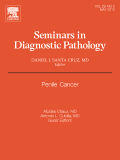
SEMINARS IN DIAGNOSTIC PATHOLOGY
Advancing knowledge in diagnostic pathology.Seminars in Diagnostic Pathology is a premier journal that has established itself as an essential resource in the field of pathology since its inception in 1984. Published by W B Saunders Co-Elsevier Inc, this journal boasts an impressive Q1 ranking in the pathology category for 2023, placing it in the top tier of medical journals worldwide. With a focus on diagnostic pathology, it offers a platform for groundbreaking research and advancements that bridge the gap between basic science and clinical practice. The journal is committed to publishing high-quality review articles, case reports, and expert opinions that provide valuable insights for professionals, researchers, and students alike. Although it operates on a subscription model, the journal's extensive impact is reflected in its Scopus rank (#56/208), with a remarkable 73rd percentile standing in the pathology and forensic medicine category. The journal's authoritative content not only aids in enhancing knowledge but also fosters an understanding of the evolving challenges and methodologies in diagnostic pathology, making it an indispensable tool for anyone dedicated to excellence in the field.
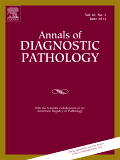
Annals of Diagnostic Pathology
Pioneering Insights for Enhanced Diagnostic Accuracy.Annals of Diagnostic Pathology, published by Elsevier Science Inc, is a pivotal journal in the field of diagnostic pathology that has significantly contributed to the advancement of medical science since its inception in 1997. With an ISSN of 1092-9134 and E-ISSN of 1532-8198, this esteemed journal is positioned within the Q2 category in both Medicine (miscellaneous) and Pathology and Forensic Medicine, reflecting its high-quality research contributions, showcased by its ranking at #73 out of 208 in Scopus for the latter category. The journal's scope encompasses various aspects of diagnostic pathology, from innovative techniques to critical reviews of pathologic findings, making it an essential resource for researchers, medical professionals, and students dedicated to enhancing diagnostic accuracy and patient care. Although it does not currently offer open access options, its wide readership and impactful publications continue to influence clinical practices and research agendas. With a convergence period extending to 2024, Annals of Diagnostic Pathology remains a leading platform for disseminating valuable knowledge in this dynamic field.
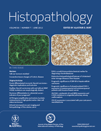
HISTOPATHOLOGY
Bridging Laboratory Insights with Clinical ExcellenceHISTOPATHOLOGY is a premier scholarly journal published by WILEY, targeting the fields of histology, pathology, and forensic medicine. With an ISSN of 0309-0167 and an E-ISSN of 1365-2559, this esteemed journal has maintained a strong academic presence since its inception in 1977. Boasting an impressive Q1 ranking in crucial categories such as Histology and Pathology, it ranks 13th out of 208 in Pathology and Forensic Medicine, and 5th out of 62 in Histology, reflecting its high impact and relevance within the scientific community. HISTOPATHOLOGY serves as a critical platform for disseminating significant research findings, reviews, and advancements in the diagnostic and therapeutic aspects of pathology. Although it does not operate under an open access model, its rigorous peer-review process ensures that published articles uphold the highest standards of scientific integrity. Scholars and practitioners alike benefit from the insights shared in this journal, as it aims to bridge the gap between laboratory science and clinical practice, fostering innovation and enhancing our understanding of disease mechanisms.

AMERICAN JOURNAL OF SURGICAL PATHOLOGY
Shaping the Future of Surgical Pathology TogetherThe American Journal of Surgical Pathology, published by Lippincott Williams & Wilkins, is a premier peer-reviewed journal serving as a vital resource for pathologists, surgeons, and researchers in the medical field. With an impressive impact factor reflective of its esteemed standing in the academic community, the journal ranks in the Q1 quartile for Anatomy, Pathology and Forensic Medicine, and Surgery as of 2023. The journal's Scopus rankings further highlight its significance, placing it within the top tiers in multiple medical disciplines. Established in 1977 and continuing through 2024, its scope encompasses groundbreaking research, critical reviews, and updates in surgical pathology, making it an essential tool for advancing the scientific community's understanding of disease mechanisms and therapeutic approaches. Researchers, clinicians, and students will find both comprehensive studies and innovative insights, ensuring they remain informed about the latest developments in surgical pathology.
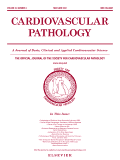
CARDIOVASCULAR PATHOLOGY
Connecting researchers and clinicians for better outcomes.CARDIOVASCULAR PATHOLOGY, published by Elsevier Science Inc, is a distinguished journal dedicated to the dissemination of high-quality research in the fields of cardiology, pathology, and cardiovascular medicine. With an ISSN of 1054-8807 and an E-ISSN of 1879-1336, this journal has established itself as a vital resource for researchers, clinicians, and students alike. It is positioned in the Q2 quartile for both cardiology and pathology, indicating its significant impact and relevance in these disciplines. The journal offers a platform for innovative studies, reviews, and clinical insights, aiming to enhance our understanding of cardiovascular conditions and their pathological underpinnings. With an H-index that showcases its scholarly influence, CARDIOVASCULAR PATHOLOGY is committed to advancing the field through rigorous peer review and open dialogue among professionals. The journal is accessible through institutional subscriptions, making it an essential reference point for ongoing research through its convergence of knowledge from 1992 through 2024.

Pathologie
Pioneering Discoveries in Forensic MethodologiesPathologie is a distinguished academic journal published by Springer Heidelberg, dedicated to advancing the field of pathology and forensic medicine. With an ISSN of 2731-7188 and an E-ISSN of 2731-7196, this journal serves as a vital platform for researchers, professionals, and students to disseminate innovative findings and insights. Currently ranked in the Q3 category of pathology and forensic medicine according to the 2023 metrics, Pathologie reflects a commitment to quality and relevance in a dynamic research landscape. Despite its relatively recent establishment from 2022, the journal is gaining traction with a Scopus rank of 139 out of 208 in its category, positioning itself as an emerging resource within the academic community. While it operates under a subscription model, the importance of the journal lies in its objective to facilitate the exploration of diverse pathological processes and enhance forensic methodologies, ultimately improving clinical outcomes and investigative practices. As it continues to grow, Pathologie stands poised to impact the pathology domain significantly.
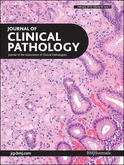
JOURNAL OF CLINICAL PATHOLOGY
Elevating Standards in Diagnostic ExcellenceJOURNAL OF CLINICAL PATHOLOGY, published by BMJ PUBLISHING GROUP, stands at the forefront of advancements in the field of clinical pathology, offering a platform for groundbreaking research and insights from 1948 to the present. With an impressive impact factor and categorized as Q1 in both Medicine (miscellaneous) and Pathology and Forensic Medicine for 2023, the journal holds a distinguished position in the academic community, ranking 22nd out of 208 journals in its category on Scopus and representing the 89th percentile. While the journal does not currently offer open access, it remains a vital resource for researchers, healthcare professionals, and students seeking to stay current with innovative methodologies, clinical techniques, and diagnostic advancements. Located in London, United Kingdom, the journal aims to bridge the gap between laboratory findings and clinical practice, emphasizing the importance of evidence-based pathology in improving patient care and treatment outcomes. Engage with the JOURNAL OF CLINICAL PATHOLOGY to enhance your understanding and contribute to the evolving landscape of clinical pathology research.
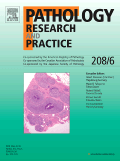
PATHOLOGY RESEARCH AND PRACTICE
Empowering Researchers with Cutting-Edge FindingsPATHOLOGY RESEARCH AND PRACTICE is a premier journal in the field of pathology and forensic medicine, published by Elsevier GmbH in Germany. With a rich publication history since 1978 and an impressive convergence period extending to 2024, this journal serves as a vital resource for researchers and professionals dedicated to advancing the understanding of pathological processes. It holds notable rankings, including Q3 in Cell Biology and Q2 in Pathology and Forensic Medicine for 2023, reflecting its significance in the academic community. The journal aims to publish innovative research findings, reviews, and case studies, facilitating a deeper understanding of disease mechanisms and improving diagnostic practices. Authors and readers alike benefit from its reputable platform, noted for its challenging and rigorous peer-review process. By fostering a collaborative environment and providing open access options, PATHOLOGY RESEARCH AND PRACTICE continues to contribute meaningfully to the discourse within its respective fields, thereby appealing to a diverse audience of researchers, professionals, and students.
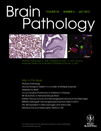
BRAIN PATHOLOGY
Unveiling Innovations in Brain PathologyBRAIN PATHOLOGY, published by WILEY, is a leading journal in the fields of neurology, neuroscience, and pathology, recognized for its rigorous peer-review process and high-impact research contributions. With an impressive impact factor and consistently ranked in the Q1 quartile across multiple categories, BRAIN PATHOLOGY maintains a prominent status, with a Scopus ranking placing it among the top 10% of journals in its fields. Since its inception in 1990, the journal has served as a crucial platform for researchers and clinicians alike, disseminating groundbreaking findings that advance our understanding of brain diseases and injuries. Through its dedication to publishing high-quality, innovative research, BRAIN PATHOLOGY plays a vital role in shaping the future of brain pathology research. While it does not currently offer open access, articles can be accessed through institutional subscriptions. Researchers, professionals, and students are encouraged to contribute to and engage with this esteemed publication to foster knowledge and collaboration within this dynamic field.